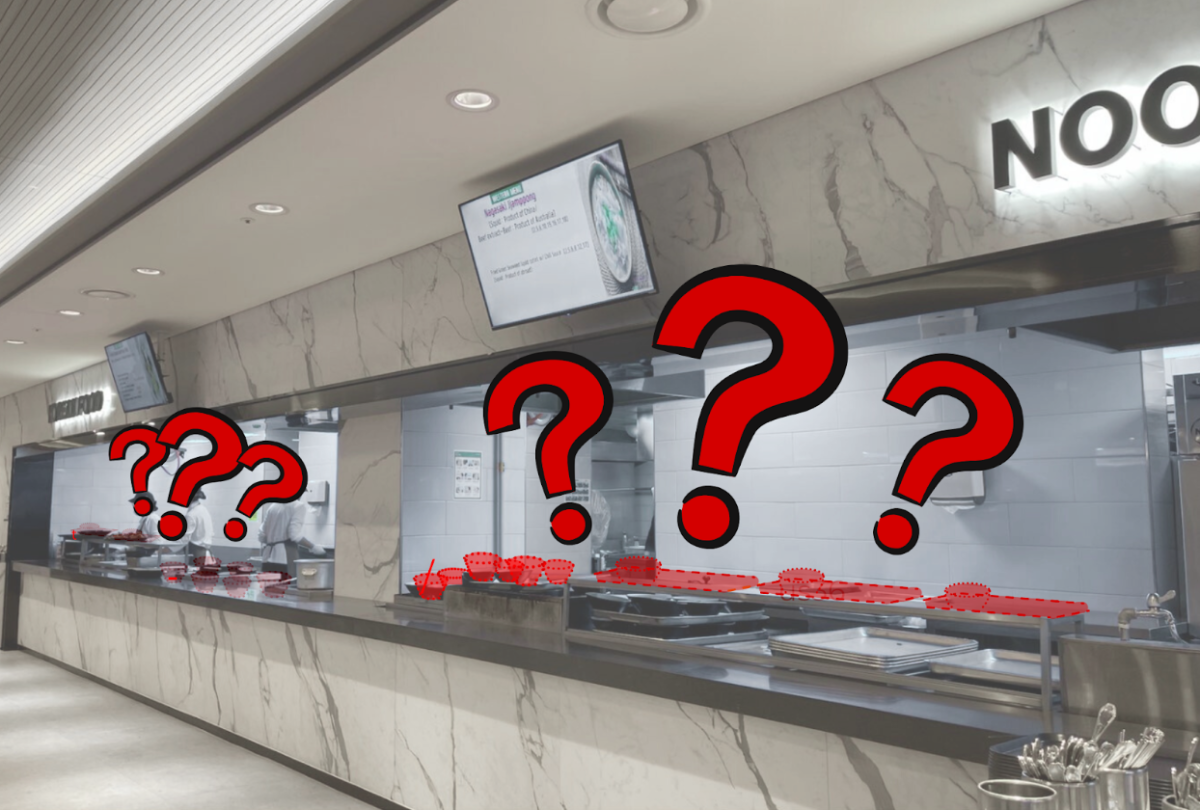Out of the 812 students from kindergarten to high school, 776 students, 96 percent of the population, choose to eat school lunch. When J&J Catering receives this data, they estimate how many portions they would need to provide for the students and communicate this with the school lunch management team. It seems like the data is perfectly calculated to prepare the exact amount of portions—so why do they always run out of food?
Many SIS students have experienced arriving at the cafeteria a few minutes late to see a long line of students on one side of the cafeteria. After scanning each side of the menu, they opt to line up to the side, either Korean, Noodles, or International menu with the best lunch option. However, the tedious time spent in line is a waste when the person in front of them takes the last plate of prepared food for the day. Students then have to wait even longer to get the alternative option the cafeteria chefs create on the spot.
This issue not only frustrates the students who paid for their promised lunch but also troubles the cafeteria staff and the management team who have spent time and effort to calculate and prepare the right amount of food according to estimations.
According to the SIS school lunch program management assistant, the cafeteria divided the number of students signed up for the lunch in half to assign portions to each of the two menus they offer. Since the SIS lunch system does not put limits on how many dishes a student can take for the day, students take both meal options—a reason why the management assistant reported that they end up preparing more than half of the portions for each menu.
However, on days when one dish is significantly favored more than the other, this method of dividing it equally does not work effectively and thus results in the dishes running out or unexpected alternative options being served on the spot. During the first semester, the management team reported that there were days when the initially estimated number of students choosing to take a dish tripled.
This has been an especially prevalent problem for high school students. On top of the unbalanced preference, the previous method of estimating lunch portions as a whole, meaning combining students across all grade levels resulted in high school students not getting enough of the dish promised on the menu schedule. The short lunch period due to the relatively small size of the SIS cafeteria can also be attributed to this where it would mean that the lunch lines would get very lengthy. Therefore, SIS high school students, the school level with the highest enrollment of 298 and the last in line of lunch period starting at 12:40 p.m., would generally be facing this issue more frequently than the other school level.
After this trial and error, the school lunch management team has implemented a new program this year to prevent disadvantages for the high school students who eat later than the elementary or middle school students: separating lunch portions by school level and creating a special lunch day every Thursday that offers one type of menu.
One type of menu would reduce time spent waiting in the line, and dividing lunch portions of elementary, middle, and high school separately would prevent the situation where high school students are put at a disadvantage to eat the alternative options.
There is a way a student can directly improve a weak aspect of the school lunch system. An important factor that students often overlook is filling out the lunch survey that aims to measure student and staff satisfaction. The responses from this survey every semester are taken into close consideration and used to implement new changes by the management team. Take action yourself to benefit yourself.


